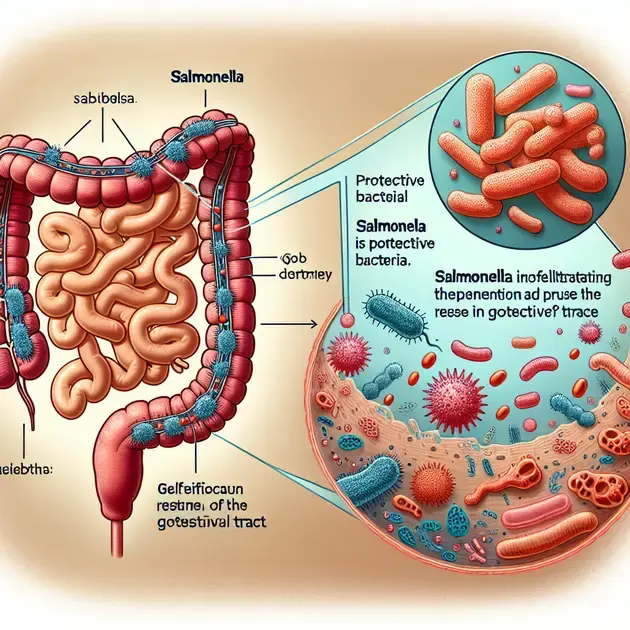Salmonella is a common type of bacteria that can be found in contaminated food, such as raw poultry, eggs, and unpasteurized milk. When ingested, Salmonella can cause severe gastrointestinal symptoms like diarrhea, vomiting, and abdominal pain. While our gut naturally has beneficial bacteria that help prevent infections, Salmonella has developed ways to overcome these defenses.
A team of scientists conducted a study to understand how Salmonella is able to invade the gut despite the presence of protective bacteria. They used in vitro experiments and animal models to uncover the interactions between Salmonella and the gut microbiota.
Their findings showed that Salmonella has specific mechanisms to bypass or outcompete the protective bacteria in the gut. They produce enzymes and toxins that target and disrupt the beneficial bacteria, neutralizing their protective effects. This allows Salmonella to establish an infection and multiply.
The study also highlighted the role of Salmonella’s motility in overcoming the gut’s defenses. The bacteria have whip-like appendages called flagella, which help them move quickly through the gut environment. This enables them to reach the intestinal epithelial cells, where they can adhere and invade the gut lining.
Interestingly, the composition of the gut microbiota plays a significant role in determining vulnerability to Salmonella infections. Certain populations of protective bacteria were found to be more effective in inhibiting Salmonella growth, while others were less effective or even promoted bacterial invasion. This emphasizes the importance of maintaining a diverse and balanced gut microbiome to reduce the risk of Salmonella infections.
In conclusion, this study provides valuable insights into how Salmonella invades the gut and causes food poisoning. By understanding the mechanisms used by these bacteria, we can develop targeted strategies to prevent and treat Salmonella infections. It also highlights the importance of a healthy gut microbiome in reducing the risk of foodborne illnesses caused by Salmonella. Further research is needed to explore these mechanisms in more detail and discover new ways to combat Salmonella infections.
